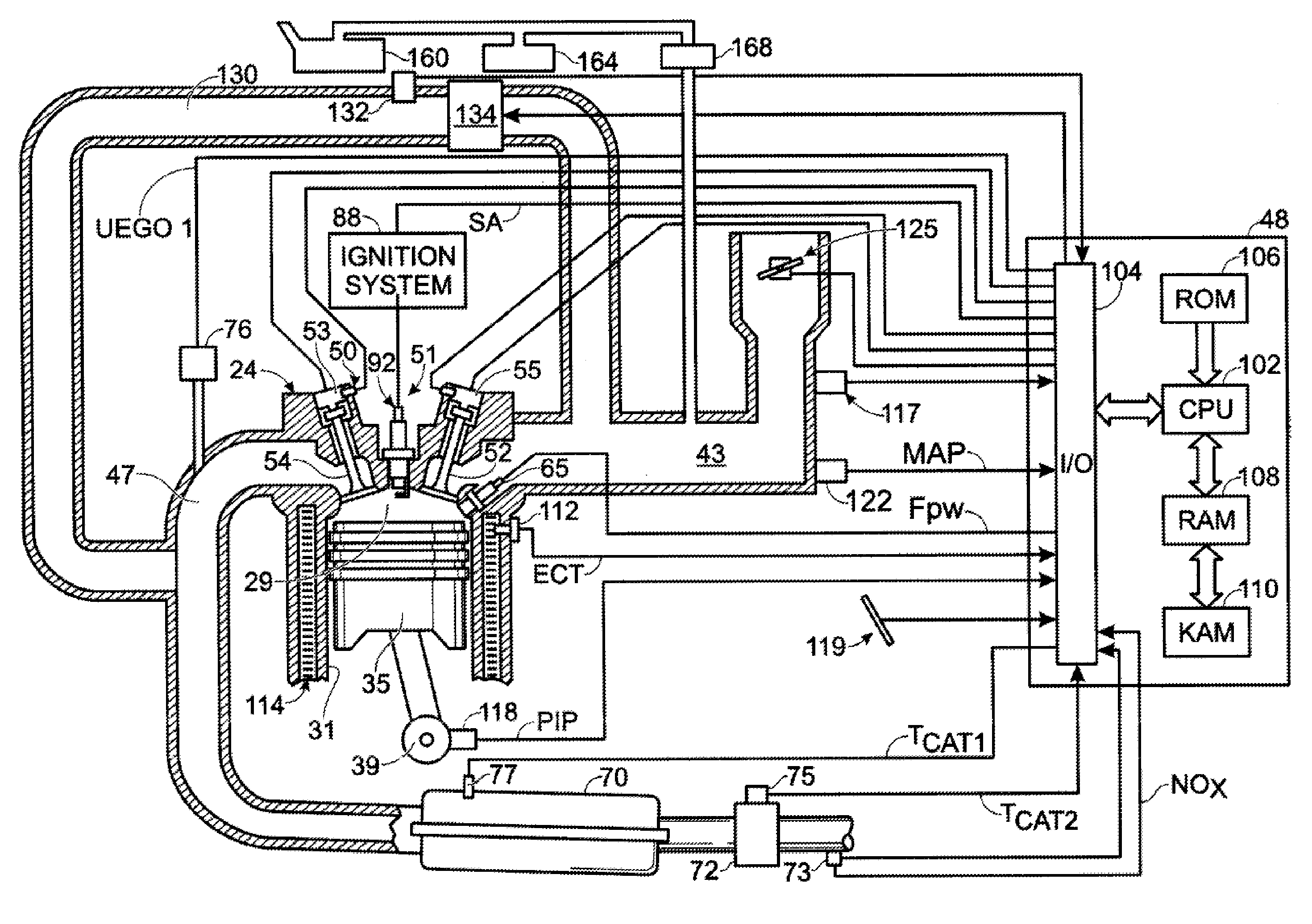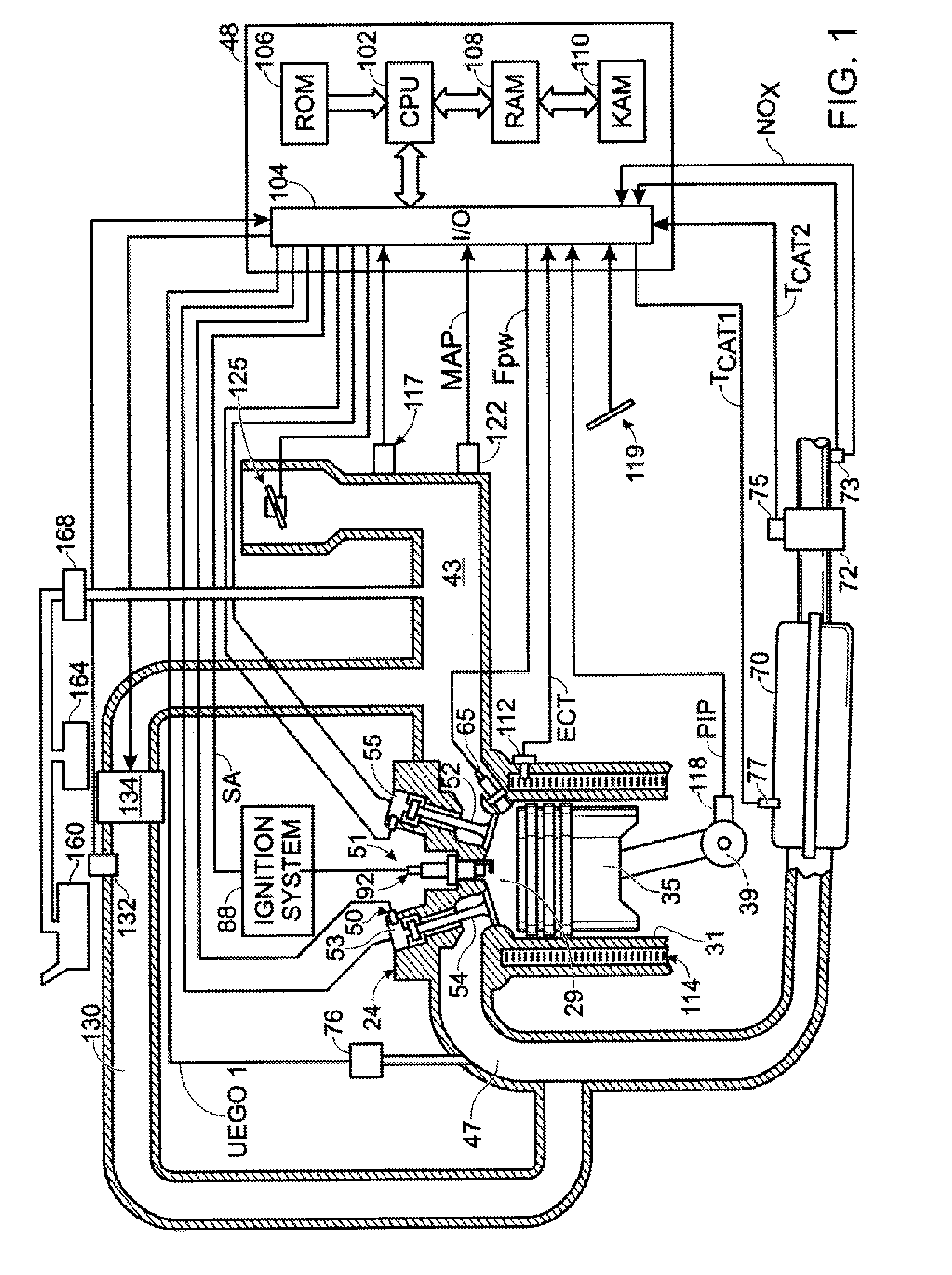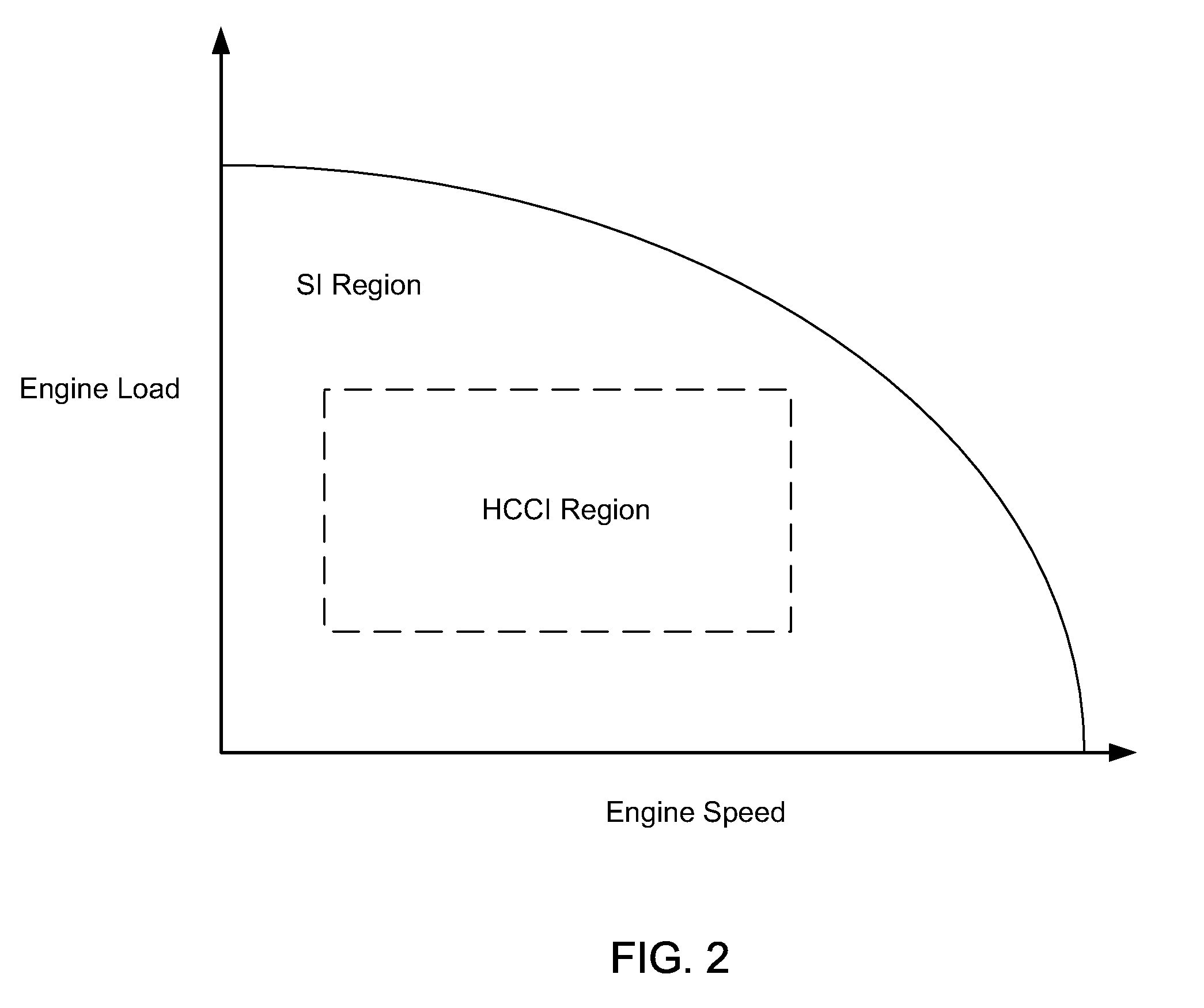Approach for Facilitating Engine Mode Transitions
a technology of engine mode and transition, which is applied in the direction of electrical control, non-mechanical valves, combustion-air/fuel-air treatment, etc., can solve the problems of undesirable discontinuities, difficult transition between si mode and hcci mode, and different operating conditions
- Summary
- Abstract
- Description
- Claims
- Application Information
AI Technical Summary
Benefits of technology
Problems solved by technology
Method used
Image
Examples
Embodiment Construction
[0011]Engine combustion mode transitions may utilize various adjustments in valve timing and / or ignition timing. As described further, in one example approach, valve timing adjustments which vary the valve overlap and / or relative intake and exhaust valve durations and timing during a transition in operating modes may be used to improve the transition. Further, spark timing adjustments that are coordinated with the above valve timing adjustments may be used to further improve the transition.
[0012]Specifically, such operation may be used during a transition from SI mode to HCCI to reduce knock and / or torque fluctuations as operating conditions are adjusted in anticipation of HCCI mode operation. For example, the temperature of the initial charge (i.e. initial mixture of air and / or fuel) may be increased during the transition by intake air heating and / or increased EGR, etc., thereby increasing the potential for knock. As such, the spark timing may be retarded (e.g. spark timing may be ...
PUM
 Login to View More
Login to View More Abstract
Description
Claims
Application Information
 Login to View More
Login to View More - R&D
- Intellectual Property
- Life Sciences
- Materials
- Tech Scout
- Unparalleled Data Quality
- Higher Quality Content
- 60% Fewer Hallucinations
Browse by: Latest US Patents, China's latest patents, Technical Efficacy Thesaurus, Application Domain, Technology Topic, Popular Technical Reports.
© 2025 PatSnap. All rights reserved.Legal|Privacy policy|Modern Slavery Act Transparency Statement|Sitemap|About US| Contact US: help@patsnap.com



